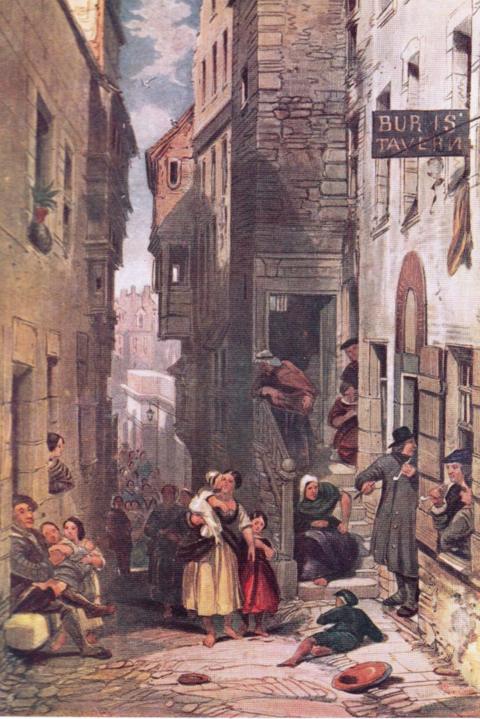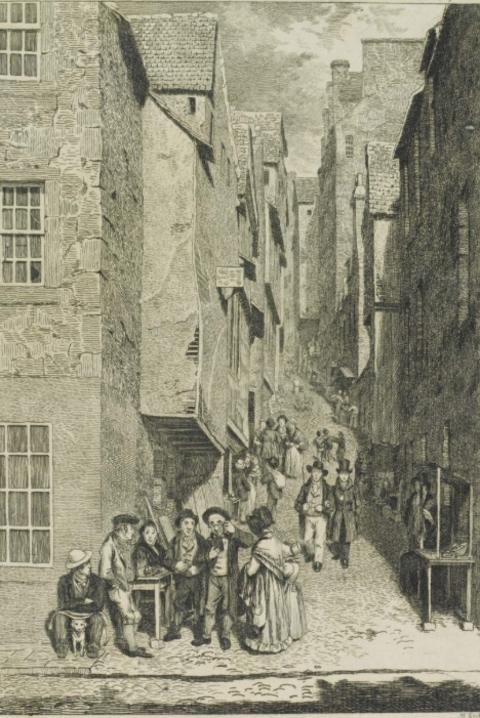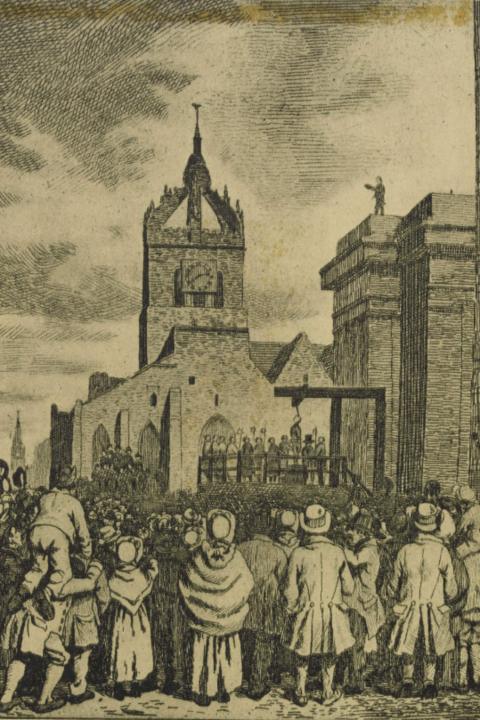George IV Bridge was built as a route to connect the centre of Edinburgh - the Royal Mile - over the Cowgate, which was in a valley, to the south side of the city.
Its arches had chambers built into them on several floors for storage for the shops at the top of the bridge.
Libberton's Wynd was the route from the Cowgate to Edinburgh's gallows in a section of the Royal Mile called The Lawnmarket - before it was demolished to make way for the bridge.
Later, The National Library of Scotland was built on top of the bridge, with floors running all the way down into the Cowgate below.
The bridge was built on Libberton Wynd's foundations, which can still be seen in The Void.
The corridor runs for several hundred feet at a steep gradient.
Officials have widened the entrance so there is now a full-sized door. Some of the chambers are now used to store huge water tanks for the library's sprinkler system.


